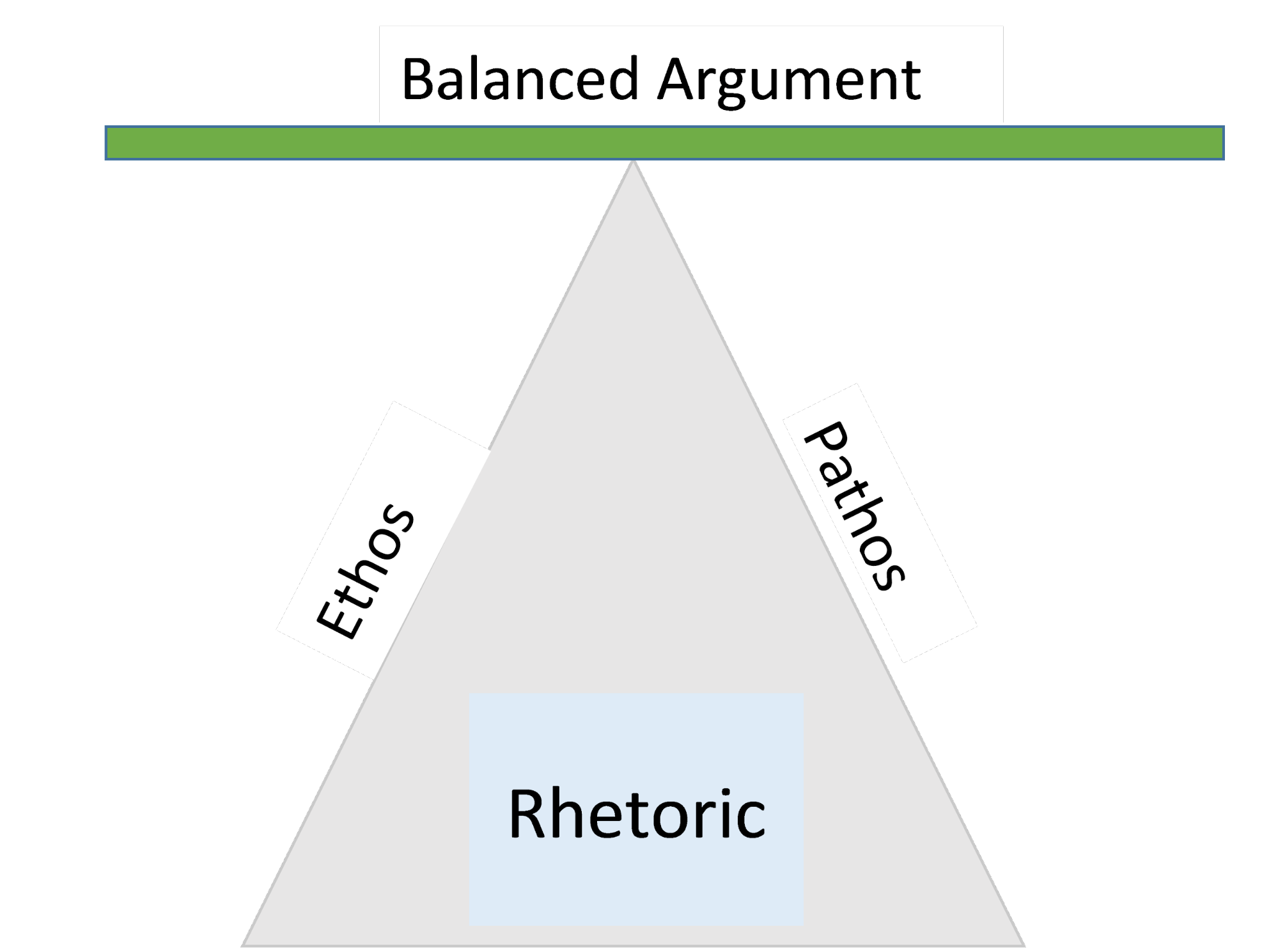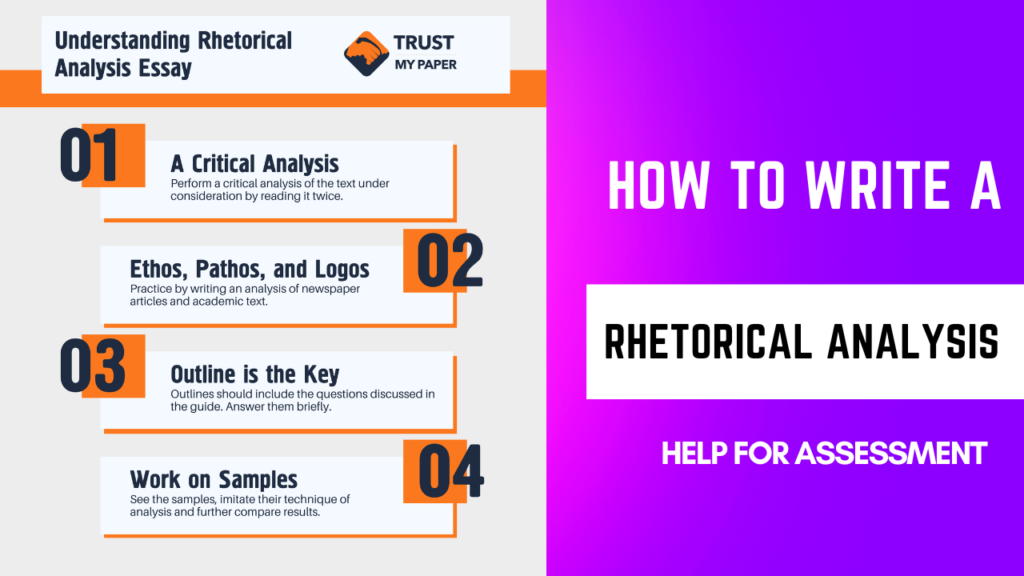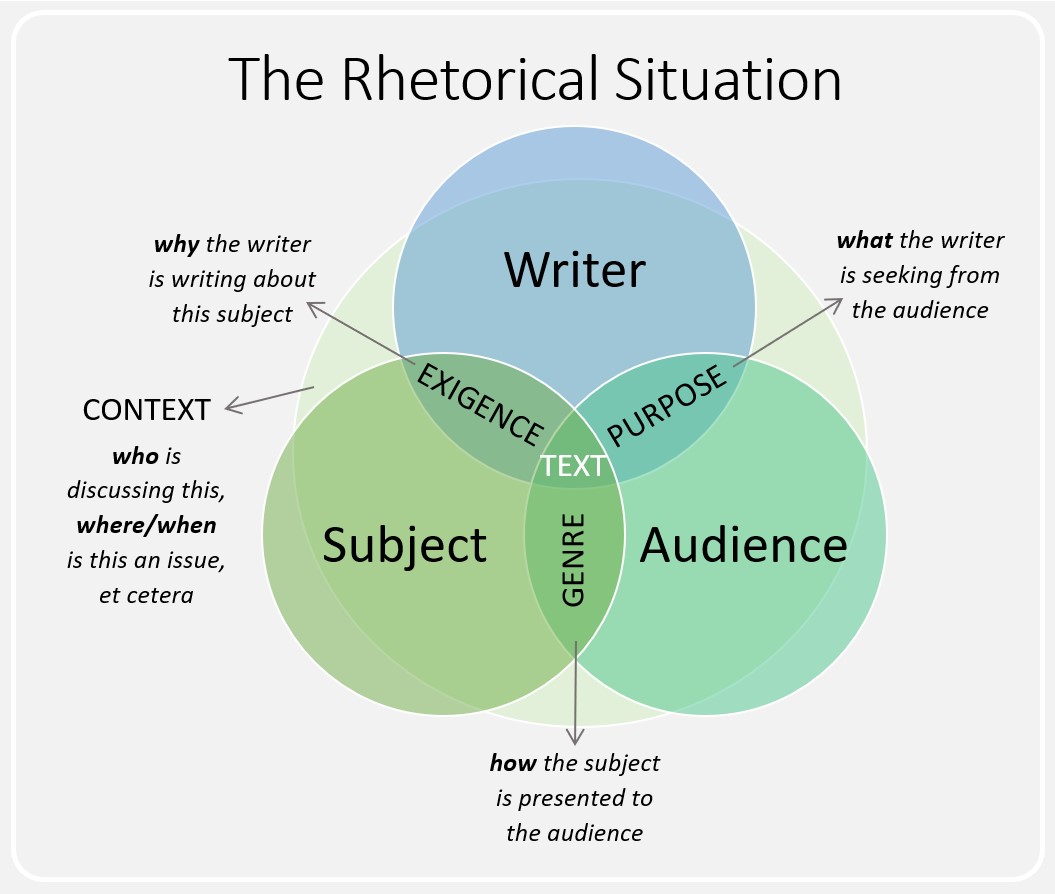If you’re looking for a guide on how to write a rhetorical analysis the right way, this article is for you.
Journalists and reporters love to throw the word 'rhetoric' around, as in 'political rhetoric' and 'empty rhetoric. The word serves their purpose quite well because its dictionary meaning is 'the art of effective persuasive writing or speaking.'
In this case, rhetorical analysis is the study of how effectively a writer or speaker communicates and how they use various techniques and tools to accomplish it.
As a student in the arts, literature, history, and other similar disciplines, you will be called to write a rhetorical analysis essay on works, mostly nonfiction publications.
This article will take you on a step-by-step journey through the exciting world of rhetorical analysis, what form your assignment should take, and how you can ensure that your own writing passes the threshold of great rhetoric.
What Is a Rhetorical Analysis
Given that rhetoric is the study of how writers use words to influence an audience, a rhetorical analysis is a detailed breakdown of how a writer achieves his goal in a written work.
Specifically, it is an essay that breaks down such a work into parts and shows each plays a part individually and in the whole to bring about the intended effect.
Even though we refer to nonfiction works, any type of communication can be subjected to this form of analysis.
A politician's speech might be weighed based on how effectively he manages to rouse his audience. A video or piece of art might be analyzed based on how the creator managed to express their intended message.
For the sake of simplicity, let us retain the word ‘writer’ to refer to the person whose work is under rhetorical scrutiny. You can remain the student, and we will limit ourselves to purely nonfiction written work.
Most rhetorical analysis essays are a few pages long of mostly unstructured work, following the flow of ideas as you (the one analyzing) sees fit.
Just as you are analyzing how another writer is effectively communicating, you are also striving to pass on your own ideas successfully.
What a rhetorical analysis is not: it is not a summary of a published work.
You are not seeking to reword the work, not summarize the message for readers. You will not put so much emphasis on what the work has to say as in how it says it.
It is not an easy task to break down a full-length book, journal, article, or other publication into its various literary devices without first having a working strategy.
If you would prefer to have expert writers and acclaimed academicians help you complete your rhetorical analysis assignment, get in touch with the team at Help for Assessments.
Parts of a Rhetorical Analysis
Like most other essays, a rhetorical analysis essay is made up of three parts: an introduction, body, and conclusion.
However, these will not be of much help if you have no previous experience. The logical parts of such an essay are much more useful.
1. Thesis/Claim
A rhetorical analysis essay rests on a few major arguments you make based on what your opinion regarding the work is.
Each of these arguments is part of your thesis statement and should come from your strongest claims about the work.
Your thesis statement argues the most important rhetorical features in the work. You can write one or several statements, each one expressing a major point.
Remember to make the thesis statement debatable, specific, and be ready to back it up later in the text with a lot of evidence.
You will essentially be explaining and expounding your thesis statements later in the text.
One approach is to give your whole argument upfront in the thesis statements and then explain them later in the text. This is your claim you will be talking about, not what the author claims in the text.
We can take the example of Horace Miner's article titled Body Rituals Among the Nacirema. To start with, you might summarize your argument thus:
"The article uses sociological imagination to distance the reader with what he considers an inferior culture to effectively deliver the message before he realizes that he is the subject. It also uses a didactic tone to give credibility and emphasis on his message, while infusing an objectivity that would otherwise not be present given the sensitive nature of the topic ... "
2. Author
The author(s) of the text are in control of what the flow of the text is, what the reader sees, and the overall outcome of the work.
Thus, you should think about discussing the author’s motivation for writing the word, what their goal is, and what their qualifications are.
Talking about the writer establishes what is referred to as the rhetorical situation.
Answer the following questions to help you figure out what you need to mention.
For example, in the work Body Rituals Among the Nacirema, you might say about the author:
“Horace Miner uses cryptic language to conceal the fact that the culture he is actually talking about is the American one. He makes the reader assume moral superiority in judging what he considers an inferior culture, only to reveal in the end that the subject under scrutiny is himself. In the work, he seeks to address America’s obsession with cosmetic beauty at any cost, even their own health. He does this subtly by using … “
3. Audience
If writing is a performance, the reader is the audience you have to think about to make your communication effective.
The author had to think about who was going to read his work, who it was meant to influence, and what pressure points he would manipulate to deliver the message.
You can talk about how the writer's strategies influence the audience and help to bring the message home. How do his techniques appeal to the reader?
As it is, look through the writer's lens and share their angle of view to effectively dissect, describe, and critique their approach.
4. Summary of The Text
In as much as the main goal is to describe and analyze how the work puts its message across, the message itself is important for the reader to understand what you are talking about.
The essay is not meant to be abstract but rather practical and with a hands-on approach.
The summary also gives the context of the work. Use your own words to tell what you believe to be the main message of the work, taking care to remain as brief as possible.
Break the message into parts and tell what each part is conveying.
In this section, you should also use descriptive words like metaphor, analogy, common ground, metonymy, euphemism, foreshadowing, among other literary devices.
You will likely have learned these already in class, and this is a chance to prove to your instructor that you were listening.
Taking Miner’s example again, you might have a few statements such as:
The author uses common ground to place himself and the author or a superior level, thus creating engagement to help the reader identify with his message, before finally revealing that he was, in fact, analyzing himself.
5. Support
This is where you back up your claims/thesis statements with arguments and facts from the text. This is done through emotional appeals, quoting or paraphrasing the text, evidence from other sources and texts, among others.
The goal is to make the appeal as solid and credible as possible.
One of the most important forms of support comes in three forms of claims called pathos, ethos, and logos.
We shall take a deeper look at each and what they entail, but for now, remember that support for the statements takes a structured form.
This support comes in the body of the essay. You will be writing it in paragraphs beginning with a strong topic sentence, then followed by a few explanatory or expository sentences.
Each paragraph will be describing one form of stylistic choice used in the text. The entire support section should flow logically and the arguments link into each other.
A rhetorical analysis isn’t usually long, a few pages at most. Most instructors will have you write about five pages or so.
As such, there is no need for sub-sections in the body. The support sets the stage for the final part; the warrant.
6. Warrant
A warrant in rhetoric writing is the connection between the claim and the arguments made in the text.
It is usually an assumed kind of support or belief, inference, experience, or value that ties the writer to the assumption they share with the audience.
If this belief were wrong, the entire argument would be wrong and out of place.
In our example text, Miner assumes that other Americans share the same superiority complex with him and will thus assume an elevated state, a moral pedestal, as they read the article.
If this were a wrong assumption, his techniques would daily dramatically.
The Rhetorical Triangle: Ethos, Pathos, and Logos

The support in a rhetorical analysis essay is dynamic and each part relies on the others to stand.
The three major parts mentioned: ethos, pathos, and logos, form a kind of rhetorical triangle where this relationship is apparent.
A final look at these three devices, also called claims, will help you craft an A-grade essay.
1. Ethos
Ethos refers to the author’s authority or credibility as established in the essay.
Thus, an ethical appeal uses the writer’s own credibility, expertise, knowledge, or other position of higher regard compared to his audience to give importance to the work.
This position of importance can be achieved in different ways.
Some authors prefer to negotiate with the audience beforehand, others set forth their credibility with convincing arguments, while others prefer to set up a different persona in the text to assume this authoritarian position to invoke ethos.
2. Pathos
Pathos, as in the word pathetic, refers to an emotional appeal to the audience’s feelings.
Here, the writer would be looking to evoke pity, angler, sympathy, tenderness, sorrow, or any other emotion to elicit a reaction or achieve a goal.
Advertisements and political propaganda do this to great effect.
Pathos is also a valid appeal in academic work, but it must be backed by a lot of facts and hard evidence.
Otherwise, a work rich in pathos but lacking in either ethos or logos is empty and risks polarizing the audience or losing them completely.
3. Logos
As you might guess, logos is the same word used in 'logic.' it involves a practical appeal or demonstration to the mind and intellect of the audience.
Using facts, figures, and fact-based evidence, the writer seeks to draw connections that the audience is meant to see as logical arguments.
Logos is a major device used in scholarly work.
Scientific minds rely on hard evidence and logical facts to prove a point, but it would be unappealing unless it was garnished skillfully with a bit of pathos.
As the rhetorical triangle shows, the three major parts are fully co-dependent. However, a few others are also worth a mention:
4. Kairos
Kairos means 'right time.' The most effective writers build the tempo up to the time when they can deliver the main argument.
If it were given too early or too late, it would not have the effect desired and might even be detrimental to the work.
Thus, a good writer knows how to time their acts perfectly. That is kairos in action.
5. Stasis
Stasis means 'resting place.'
A writer may move the arguments away from his main idea in such a way that they seem to differ, but will actually rest on one firm point that seems irrefutable.
Such is the mark of a skilled writer, and this common point or foundation is what is called stasis.
Remember to include a ‘Works Cited’ section at the end of your essay.
It will be your bibliography of both the text under analysis and any other sources you have relied on during in the essay. Use an approved citation style for this section.
How to Write a Good Rhetorical Analysis Step-by-Step
Rhetorical essays are typically unstructured, at least not in the way that other assignments can be.
The way to approach them if you want to write an excellent essay is through a planned logical approach. Here is one way to go about it:
1. Pre-writing
The first part, one that you will include in the essay, is a general explanation of what you think the work is about.
Start with a broad approach and talk about the impression the work has had on you.
However, remember that you will later have to defend each of these opinions.
2. Breakdown
Pick out the major strategies or techniques that the writer uses to bring his message home.
They will be techniques you have already covered in your schoolwork, so be lookout as you are reading the work.
3. Craft Your Thesis Statement
Write down a few sentences explaining what the major strategies used in the text are.
As you do, note down the textual evidence you will use to support them.
Remember that you should also be doing this as you read through the work, preferably on a notepad for future reference.
4. Write the Draft
Make sure that you have your thesis statements put down and polished because there will be little room to change them later.
Then write as if you are trying to debate or convince your colleagues regarding the literary devices and techniques in use.
5. Edit and Proofread Your Work
Go through your work once or thrice to make sure that there is a natural flow of ideas. Of course, there should be no grammatical errors in the work.


